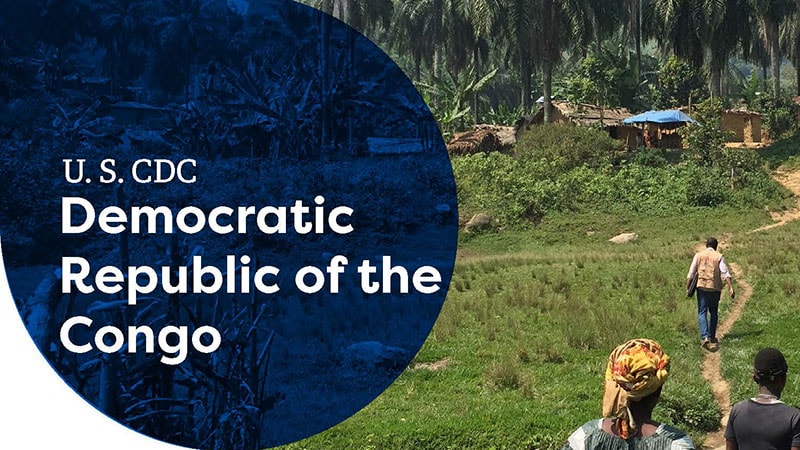At a glance
CDC works closely with the Government of the Democratic Republic of the Congo (DRC) to strengthen health systems and prevent the spread of infectious diseases. Key initiatives include the Global Health Security Agenda, U.S. President’s Emergency Plan for AIDS Relief, and President's Malaria Initiative.
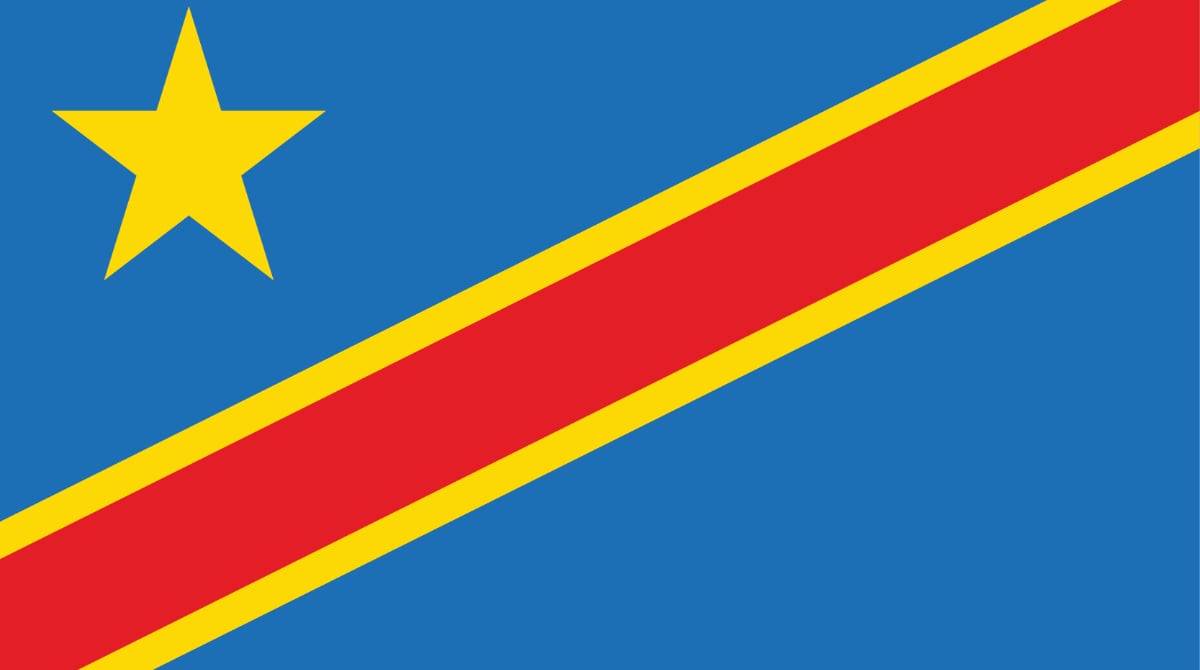
Overview
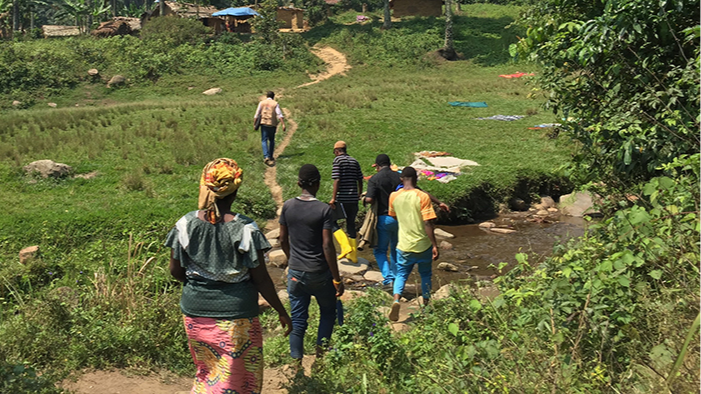
Photo by Mary Claire Worrell/CDC
CDC established an office in DRC in 2002. CDC works with the DRC Ministry of Health (MOH) and other partners to address the following public health areas:
- Global health security
- HIV
- Tuberculosis (TB)
- Malaria
- Outbreak response
- Vaccine-preventable diseases
Global health security
Strategic focus
DRC has a large population, covers a wide geographic area, and shares borders with nine other countries. CDC, DRC's MOH, and partners work together to prevent, detect, respond to, and control infectious disease outbreaks in DRC.
CDC partners with the MOH to implement the National Public Health Institute (NPHI) established in 2022. The NPHI coordinates core public health functions, including preparedness and outbreak response, surveillance, laboratory systems, and workforce development.
Laboratory strengthening
CDC helped develop the national laboratory strategic plan that guides laboratory systems strengthening in DRC. CDC donates key equipment and enhances lab diagnostics, network optimization, and quality management systems. This work helps meet the increasing need for early diagnosis of infectious diseases.
CDC supported the installation of a laboratory information system (LIS) in 10 laboratories to streamline laboratory processes. CDC has also supported training laboratory staff and monitoring testing quality using the external quality assurance program.
During the COVID-19 pandemic, CDC donated equipment and safety materials to laboratories to promote safe sample processing. CDC supports the LIS for COVID-19 testing data management.
Workforce development
Through the Field Epidemiology Training Program (FETP), CDC strengthens DRC's capacity to investigate and respond to outbreaks before they become epidemics. DRC's FETP was established in 2015 and currently consists of three levels of training: frontline, intermediate, and advanced. Participants strengthen their skills in collecting data and translating data into evidence-based action. FETP graduates primarily include national and district public health staff whose expertise have been critical to DRC’s Ebola and COVID-19 responses. Through FETP, CDC strengthens DRC's workforce capacity to identify and stop outbreaks before they spread.
Emergency response
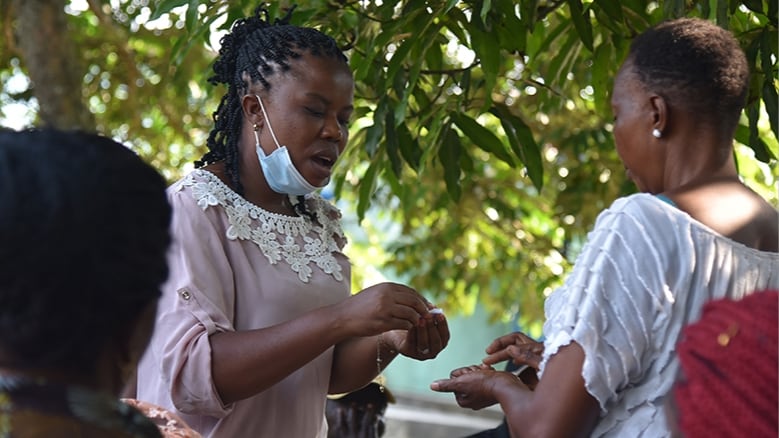
Photo by Eric Ahassa/Bizzell
Strong rapid response capacity is critical to addressing public health threats and preventing the spread of diseases regionally and globally. CDC’s community-based surveillance support was critical to the country’s COVID-19 response. During the pandemic, CDC supported:
- Vaccination campaigns in two provinces
- Four Intra-Action Reviews to recommend strategies to increase vaccine uptake
- Developing guidelines for care and treatment, laboratory testing, and infection prevention and control
CDC helped develop standard operating procedures for the National Public Health Emergency Operations Center and rapid response teams. CDC also helped develop standardized training materials for rapid response teams and public health emergency management.
In 2023, CDC launched a Public Health Emergency Management (PHEM) training for 60 of DRC’s public health experts. Participants learned how to use an Incident Management System (IMS), which is the gold standard in public health emergency operations centers in the U.S. and across the globe. At the end of the training, participants were certified as PHEM instructors for the country.
Key achievements
- DRC's FETP has trained more than 449 graduates.
- CDC supported emergency management training for more than 80 MOH staff in four provinces.
- CDC, MOH, and partners established a laboratory accreditation program for 16 laboratories.
HIV and TB
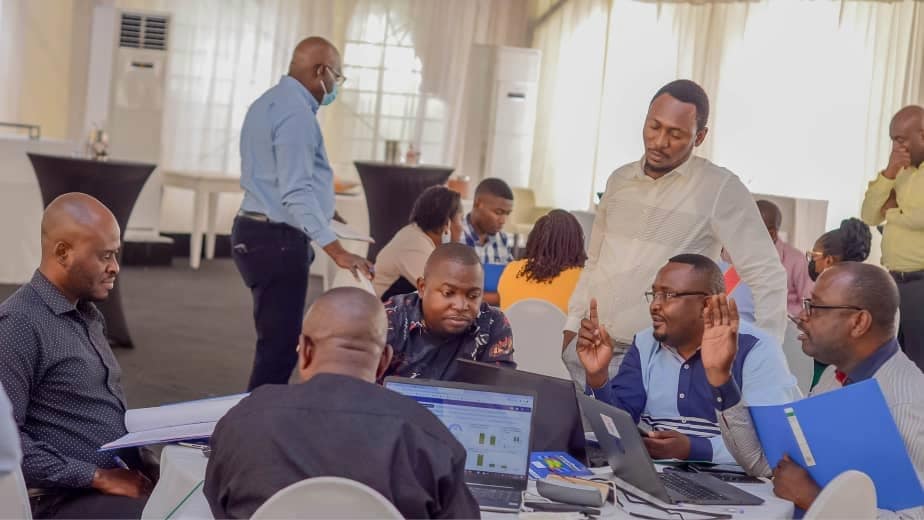
Strategic focus
As a key implementer of the U.S. President’s Emergency Plan for AIDS Relief (PEPFAR), CDC partners with DRC's government to provide patient-centered and integrated HIV and TB services. CDC also helps strengthen disease surveillance, health information systems, laboratory capacity, and health workforce development.
CDC works with the MOH to sustain epidemic control by providing services in Kinshasa and Haut-Katanga. Activities include scaling up HIV prevention and treatment programs through:
- Diagnosing people living with HIV.
- Initiating and maintaining treatment for people with HIV.
- Eliminating mother-to-child transmission.
- Increasing viral load coverage.
- Increasing access and uptake of pre-exposure prophylaxis (PrEP).
CDC strengthened HIV surveillance in three provinces (Kinshasa, Haut Katanga and Lualaba) by establishing recency testing capacity. Recency testing helps to identify geographical areas with an emerging HIV outbreak. This information is critical for tailoring public health responses to the areas and sub-populations with increasing HIV cases.
Key achievements
- CDC and partners tested over 480,000 people for HIV, and treated over 100,000 people living with HIV.
- CDC and partners provided services to more than 29,500 orphans, children, and caregivers who are impacted by or at higher risk of HIV.
- More than 90% of people receiving HIV treatment also completed preventative TB treatment.
Malaria
Strategic focus
Through the President's Malaria Initiative (PMI), CDC supports the prevention and control of malaria in DRC.
CDC-supported activities include:
- Monitoring mosquito behavior and resistance to insecticides.
- Providing long-lasting insecticide-treated bed nets.
- Preventing malaria during pregnancy.
- Enhancing diagnostics, surveillance, and evaluation of malaria-related activities.
- Researching social and behavioral changes impacting malaria prevention and case management.
Key achievements
- From 2020-2021, CDC helped train over 3,800 healthcare providers in malaria diagnosis and treatment.
- CDC has supported enhanced malaria treatment at more than 2,600 community healthcare sites since 2017.
- Since 2011, the proportion of children under the age of five who sleep under a net increased from 5% to 51%.
Mpox
CDC has been supporting DRC mpox research and response for more than 20 years. Clade I mpox occurs regularly, or is endemic, in DRC.
Since 2010, CDC has supported laboratory-based mpox surveillance in DRC’s Tshuapa province. This robust surveillance system is a platform for clinical research and enhanced understanding of mpox transmission. CDC also supports research to understand mpox transmission in DRC. CDC partners with the Kinshasa School of Public Health to research human behavior related to wild animals in Tshuapa.
Current outbreak response
Since January 1, 2024, the Democratic Republic of the Congo (DRC) has reported more than 33,000 suspect mpox cases and more than 1,000 deaths. The current outbreak is more widespread than any previous DRC outbreak. Clade I mpox has spread to some neighboring countries, including Burundi, Central African Republic, Republic of the Congo, Rwanda, and Uganda.
CDC has been supporting DRC mpox research and response for more than 20 years. CDC and other U.S. government agencies are on the ground in DRC helping partners in the country with disease surveillance, laboratory capacity including testing materials, strengthening workforce capacity, case investigation, case management, infection prevention and control, border health, and risk communication and community engagement. DRC has approved the use of vaccines in-country, so CDC is working with other U.S. government agencies and partners on a strategy for vaccination in DRC.
Clade I mpox in Central and Eastern Africa
Ebola
Strategic focus
CDC has supported outbreak responses through:
- Disease surveillance
- Laboratory support
- Border health
- Data management
- Infection prevention and control
- Vaccination
- Risk communication and community engagement
Key achievements
- CDC upgraded the system used to collect data on Ebola vaccines and therapeutics.
- Since the 11th Ebola outbreak in 2020, CDC supported the Ingende health zone in establishing the laboratory diagnostic capacity to test samples from Ingende and neighboring health zones.
- Since 2019, CDC has supported the implementation of the Ebola survivor program in DRC.
- This program provides follow-up services to more than 1,000 Ebola survivors in the North Kivu and Equateur provinces.
- This program provides follow-up services to more than 1,000 Ebola survivors in the North Kivu and Equateur provinces.
- Since the 13th outbreak in 2021, CDC helped deploy a mobile sequencing laboratory to perform real-time data that link cases and orient response activities.
Meningitis
CDC partnered with the World Health Organization to train MOH staff and establish the latest testing technology for bacterial meningitis. These efforts shortened the turnaround time of laboratory-confirmed diagnosis of meningitis in DRC from two months to one week.
CDC is supporting decentralization of meningitis bacterial testing in the Tshopo provincial laboratory.
Typhoid fever
CDC supports MOH's responses to recurrent typhoid fever outbreaks. CDC supported MOH staff to conduct an outbreak investigation and pilot new rapid diagnostic tests.
CDC also works with national authorities and other partners to support water, sanitation and hygiene (WASH) activities.
Influenza
With financial and technical support from CDC, DRC began influenza surveillance in 2006. Currently, four sentinel sites conduct influenza surveillance in DRC's capital of Kinshasa. Influenza surveillance is focused among patients with influenza-like illness or severe acute respiratory illness. These activities formed the backbone for conducting COVID-19 surveillance in DRC.
Success story spotlight
When Minutes Matter, Investments in Global Health Security Pay Off
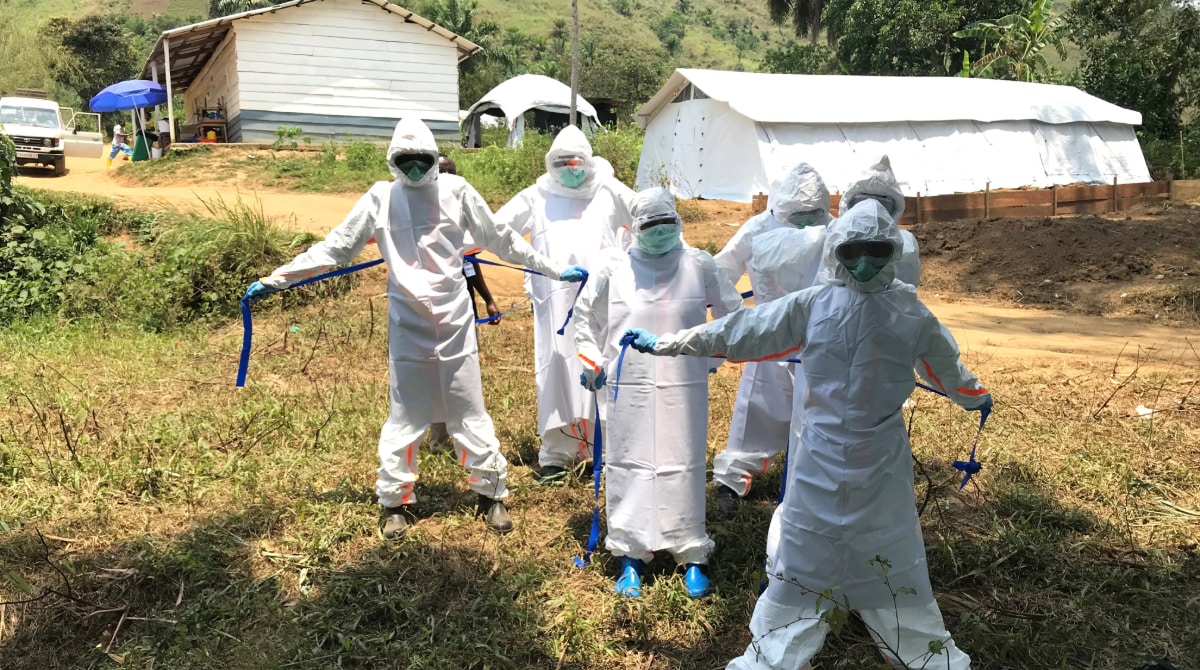
The most dangerous time in an outbreak is before we even know it's happening. At the start of every outbreak is a moment when a disease is brewing – spreading among neighbors, grandparents, and children – and growing larger. How long that moment lasts directly impacts how effectively we can respond, which impacts how many people will get sick and die, how many countries will suffer, how many resources we will need to stop it, and whether it will reach the United States.
In 2014, when Ebola spiraled out of control in West Africa, it took the full force of the world to contain it. More than 11,000 people died before it was over. That single outbreak ended up costing the United States more than $2.3 billion. During the outbreak, 11 people were treated for Ebola in the United States, two of whom died. This outbreak also marked the first known transmission of Ebola in the United States.
In 2018, Ebola began circulating in the Democratic Republic of the Congo (DRC) and went undetected for four months. This grew into the second-largest outbreak of Ebola the world has seen to date, resulting in 2,200 deaths.
The DRC continues to experience periodic outbreaks of Ebola. This is especially concerning because the DRC has a large population, covers a wide geographic area, and shares borders with nine other countries. Ongoing conflict across the region makes it much harder to find and stop outbreaks before they have a chance to spread. But it is not impossible.
In 2020, Ebola circulated in the DRC for two weeks before it was detected, resulting in 55 deaths. In 2022, Ebola went undetected for only 48 hours. Rather than the 2,200 deaths experienced in 2018, there were five.
With each Ebola outbreak, we're seeing shorter detection times leading to less spread and fewer deaths. And that's because global health security investments work. Across the outbreaks, CDC and the United States Government have worked closely with partners to strengthen their core global health security capacities, from the ability to test samples in-country and get quicker answers, to effective infection prevention and control to protect health workers and stop community and health facility spread.

